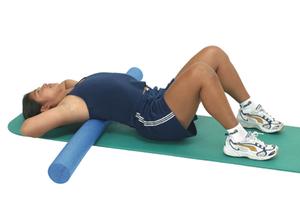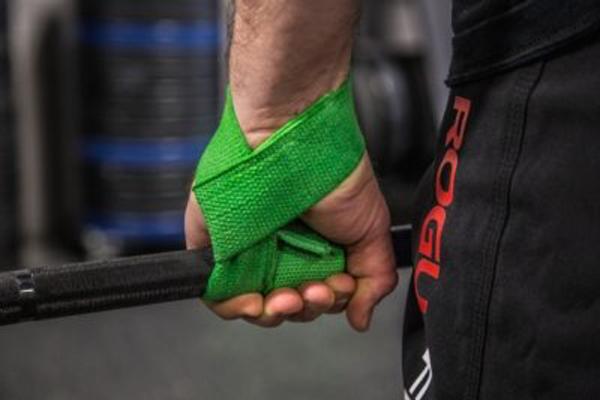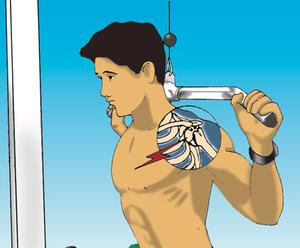10 Lifting Tips to Prevent Shoulder Injuries Part 1
by Paul Chek

Shoulder pain and dysfunction are common complaints among people who regularly lift weights and professionals whose work requires lifting, throwing or moving heavy objects.
For many of you working daily with clients, helping them avoid injuries while lifting weights by promoting the proper form should be your number one priority.
Over the next two weeks, you’ll learn some simple, common sense fundamentals you can share with clients that will help them correct common problems they may be experiencing while lifting weights, so you can concentrate on more pressing health concerns.
1. Correct the posture first.
The static yet dynamic relationship between the shoulder girdle, neck, head and jaw is very complex, but can be simplified down to the fact that the shoulder hangs from the head and neck. Plus, the primary sources of innervation of the shoulder and rotator cuff musculature emanate from the cervical spine.
Good posture (Figure 1 right) provides adequate space for nerve structures and allows for normal load sharing of the shoulder girdle and rotator cuff musculature. However, poor posture and forward head positioning (Figure 1 left) are the common results of too much sitting, faulty lifting techniques and muscular imbalance which disrupt the optimal functioning of the shoulder, possibly leading to a breakdown of the supraspinatus tendon if left unchecked.
Similarly, athletes or workers may create an imbalance from the excessive use of their dominant arm. The entire shoulder girdle can be significantly altered as the scapula (shoulder blade) moves away from its optimal position – for the physiologically minded, it migrates out of the frontal plane and into the sagittal plane – which can lead to nerve entrapment and degenerative changes in the sternoclavicular joint.
It is very important for C.H.E.K practitioners to teach their clients how to use corrective exercises and stretches to regain optimal posture, and also perform exercises while holding good postural alignment (Figure 2).
2. Mobilize the thoracic spine.
Adequate extension of the thoracic spine is important for protecting the shoulder from impingement and excessive strain once the shoulder joint reaches 140 degrees or more of flexion.
To begin mobilizing the spine — after performing a Thoracic Extension Test — you’ll need a foam roller with a diameter of 4 inches (10 cm). Place the foam roller perpendicular to the spine, slightly below the shoulder blades.
Cradle your neck with your hands, but don’t hold your head (Figure 4). Inhale gently and slowly drop backward over the foam roller toward the floor. Go slow and only as far as you can comfortably go. Hold it for 3-5 seconds, then sit up and move the foam roller up one vertebra and repeat the mobilization.
If your client experiences spinal discomfort, pain or dizziness, stop and recommend that he or she consult a doctor.
3. Assess inner unit activation.
It is important to remember that stabilization must precede force generation. In other words, you can’t fire a cannon from a canoe!
A fully functional inner unit (Figure 5) is essential to provide a stable foundation from which the arm (or leg) can then work and move. Research has shown the transversus abdominis muscle (TVA) fires 30-50 milliseconds before rapid arm or leg movement.
If the inner unit is working properly, the core muscles are stabilizing the spinal column, rib cage and pelvis so that the larger outer unit muscles aren’t used in faulty substitution patterns.
A dysfunctional inner unit can lead to the overworking of the shoulder musculature and pain and inflammation in the shoulder joint. In rehabilitation, testing and restoration of the inner unit is paramount in the treatment and prevention of “pitcher’s shoulder” because these muscles are responsible for increasing joint stiffness in the lumbar spine, pelvic girdle, thoracic spine and rib cage.
The Forward Ball Roll is an ideal exercise that can be used by nearly everyone, even clients who have painful spinal pathologies, to activate their inner core.
4. Work within your shoulder’s range of motion when bench pressing.
On a bench press, you’re expected to lower the bar to your chest. Anything less is considered poor form and sub-standard! However, not everyone is anatomically designed to perform the bench press like this, as it requires a greater range of motion (ROM) than is found in the shoulder joint of most people, particularly male athletes.
Loading the shoulder and forcing it beyond its functional ROM limit will stretch the shoulder joint capsule. This highly specialized structure is anatomically designed to not only allow just the right amount of motion to prevent joint damage.
It also contains thousands of specialized nerve endings called proprioceptors, specialized nerve endings that send the brain information about joint position and speed of movement, as well as pressure, tension and pain in and around the joint.
To protect the shoulder joint capsule from being stretched too much or injured, you must determine the optimal bench press ROM for your shoulders. Place your arm in the bench press position and allow your arm to lower to its passive end range of motion (Figure 6).
This is the position where the arm naturally stops without being forced. At this point, you have determined the exact point at which the shoulder joint capsule becomes the primary restraint to shoulder ROM.
Once you have identified the end position of passive shoulder ROM, lift the arm 2-3 cm to find your optimal bottom position for the bench press exercise. This creates a small buffer zone (10-15 degrees) which will protect the joint capsule from overloading when the weights get heavy, or you get tired.
There is approximately a 15-degree plus-or-minus carryover of strength developed at any specific joint angle with strength training. So, if you train the shoulder from 15-75 degrees, the strength gained will carryover from 0-90 degrees.
In the last part of our series, I’ll show you more tips that will help you avoid shoulder injuries, including how to avoid impingements and why you shouldn’t be using wrist wraps for lifting.
Love and chi.
Paul







